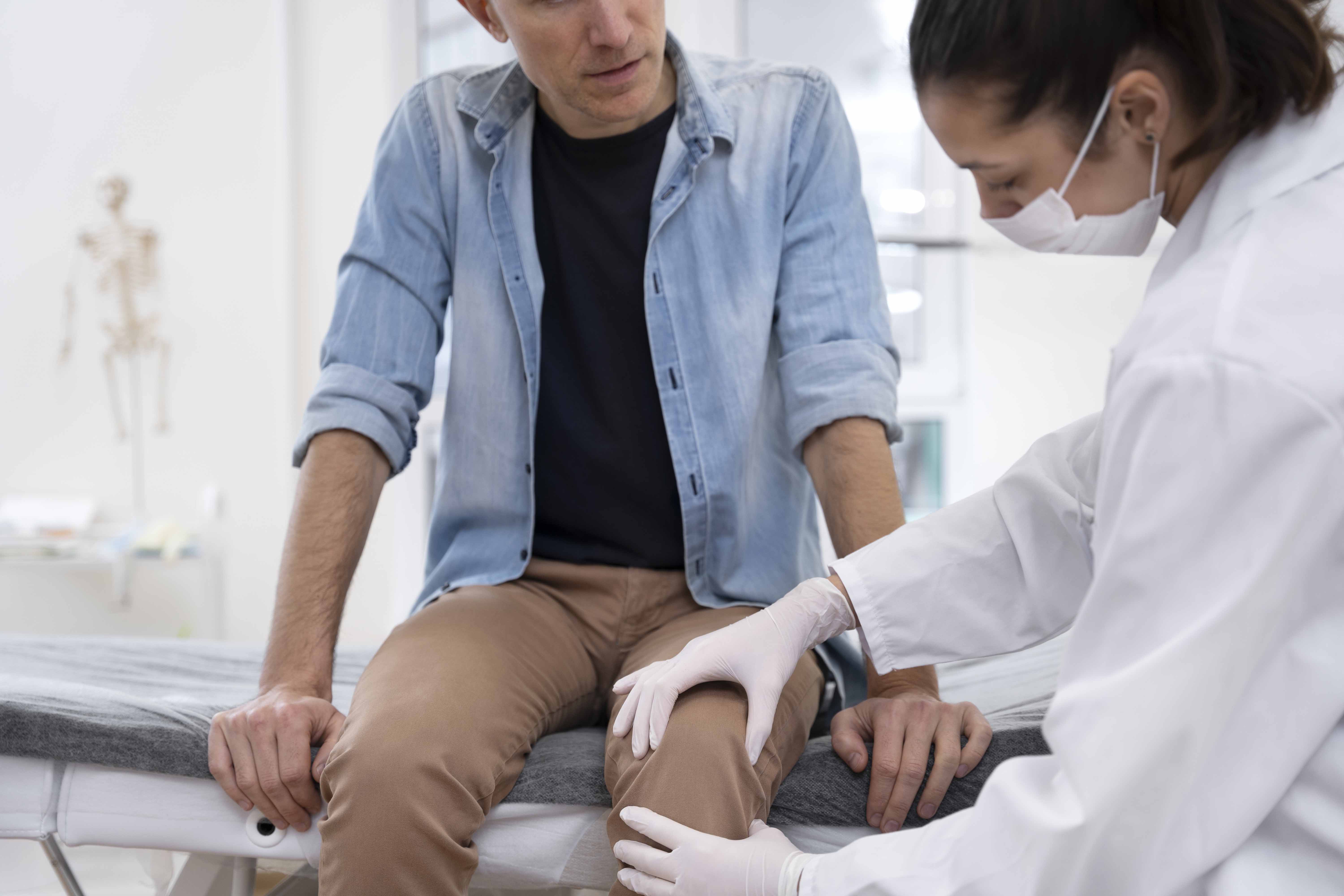Ideal for severe osteoarthritis or post-traumatic arthritis unresponsive to conservative care. India offers experienced surgeons, robotic/navigation options, short waits, and ~70–80% savings vs US/UK. MediHeal coordinates opinions, estimates, visas, travel, and rehab planning end-to-end.
Treatment Guide
Knee Replacement (Total/Partial)
Knee replacement can significantly reduce pain and restore mobility. With well-planned medical tourism via MediHeal International, patients can access high-quality surgeons, modern tech (including robotic platforms), and faster timelines at substantially lower cost.


Quick Answer
Who Needs Knee Replacement (Total/Partial)
- Severe osteoarthritis, rheumatoid arthritis, or post-traumatic arthritis with pain, stiffness, and functional loss despite meds, injections, and physiotherapy.
- Cartilage wear requiring resurfacing with implants: Total Knee Replacement (TKR) for whole joint; Partial Knee Replacement (PKR/UKA) when one compartment is damaged.
Why Choose India
- High-quality care with fellowship-trained orthopaedic surgeons and advanced technology (robotic assistance, computer navigation).
- Shorter waiting times than many Western systems.
- Substantial savings: indicative TKR packages ~USD 3,500–6,000 in India vs ≥USD 40,000 in the US (varies by implant, hospital, surgeon).
How MediHeal International Helps
- Surgeon/hospital selection, remote second opinions, itemized estimates.
- Full logistics: visas, flights, accommodation, local transport, interpreters.
- On-ground navigation with international desks from admission to discharge and rehab.
Types of Knee Replacement
- Total Knee Replacement (TKR)— Entire joint resurfaced; common for advanced OA.
- Partial Knee Replacement (PKR/UKA)— Only damaged compartment replaced; often less painful with faster recovery when appropriately indicated.
The Surgical Journey
Pre-operative
- Medical evaluation, imaging, and optimization of comorbidities.
- Anaesthesia planning; disclose all medications/supplements.
Procedure
- Regional or general anaesthesia.
- Duration varies by technique and use of robotics/navigation.
Early Rehab
- Mobilization within 24 hours where appropriate.
- Sitting/standing/assisted walking typically within 2–3 days with adequate pain control.
Recovery Timeline
Weeks 1–3
Transition from walker/crutches → cane or unassisted; swelling and pain trend down with guided physio.
Weeks 4–12
Marked functional gains; many resume driving ~6–8 weeks; low-impact activities (cycling/swimming/walking) by ~10–12 weeks.
6–12 months
Continued strength and mobility improvements; most daily activities comfortable.
Beyond 1 year
Incremental gains; prefer low-impact activity for implant longevity.
Benefits to Expect
- Significant pain relief and improved alignment/stability.
- Better quality of life when rehab protocols are followed.
- Coordinated medical tourism can reduce wait times and total costs while maintaining standards via accredited providers.
Risks & Complications
General Risks
- Anaesthesia reactions, DVT/PE (blood clots), infection, wound issues, stiffness.
- Nerve injury, implant problems, metal hypersensitivity (uncommon).
Revision Risk
- Infection and mechanical loosening are leading causes for revision TKA.
- Revisions have higher LOS, cost, and complication rates → surgeon expertise and infection prevention are critical.
Cost & Inclusions
Indicative Range: ≈ USD 3,500–6,000 (TKR, indicative)
- Typical inclusions: surgeon & hospital fees, implant (standard), anaesthesia, diagnostics, inpatient stay, immediate post-op physiotherapy.
- Exclusions: airfare, visas, extended rehab, companion lodging (unless bundled).
- Pricing varies by implant brand, fixation type, robotics/navigation, hospital accreditation, city, LOS.
* Final quote after clinical evaluation; varies by implant, technique (e.g., robotics), hospital accreditation, city, and length of stay.
Travel & Visa Essentials
- Medical visa commonly valid up to a year with attendant provisions.
- Documents: medical records, appointment letters, financials.
- Plan ~2–3 weeks in-country for pre-op assessment, surgery, and early rehab; obtain fit-to-fly clearance for return.
Preparing for Surgery
- Optimize blood sugar, weight, and blood pressure; stop smoking to reduce infection and clot risk.
- Prepare home: declutter, install supports, arrange caregiver help and mobility aids for first weeks.
Rehabilitation Focus
- Follow a progressive physio plan to improve ROM, strength, gait, and independence.
- Prefer low-impact activity long term; confirm return-to-work/sport with your surgical team.
Frequently Asked Questions
How long do I need to stay in India?
Plan roughly 2–3 weeks including pre-op, surgery, and early rehab. Complex cases may need longer or staged follow-ups.
Is robotic knee replacement better?
Robotics/navigation can improve planning and alignment in selected cases, but outcomes still depend on proper indications and surgical expertise.
When can I fly back?
After your surgeon provides a fit-to-fly note—often 10–14 days post-op for straightforward cases; confirm based on your risk profile.